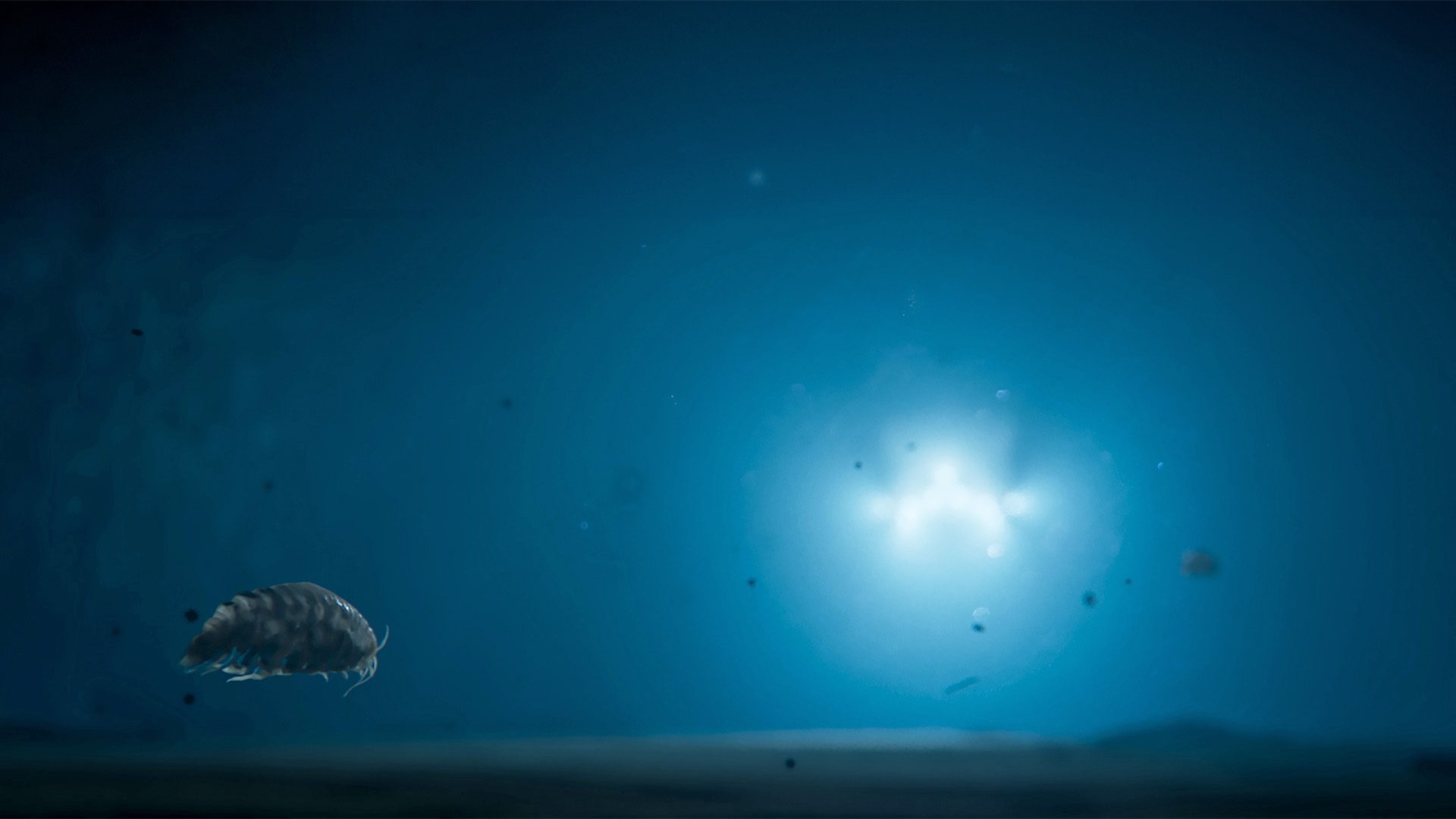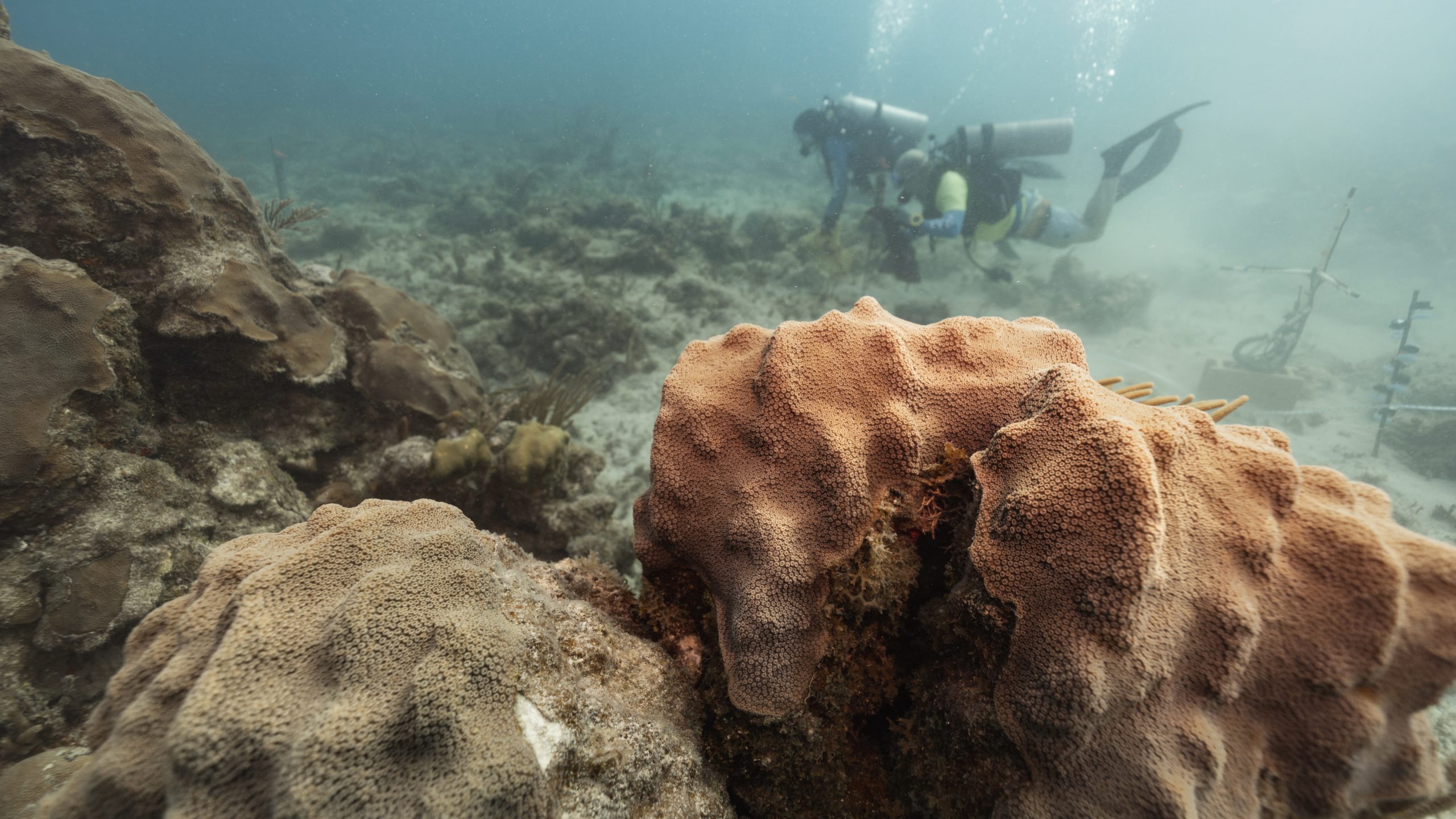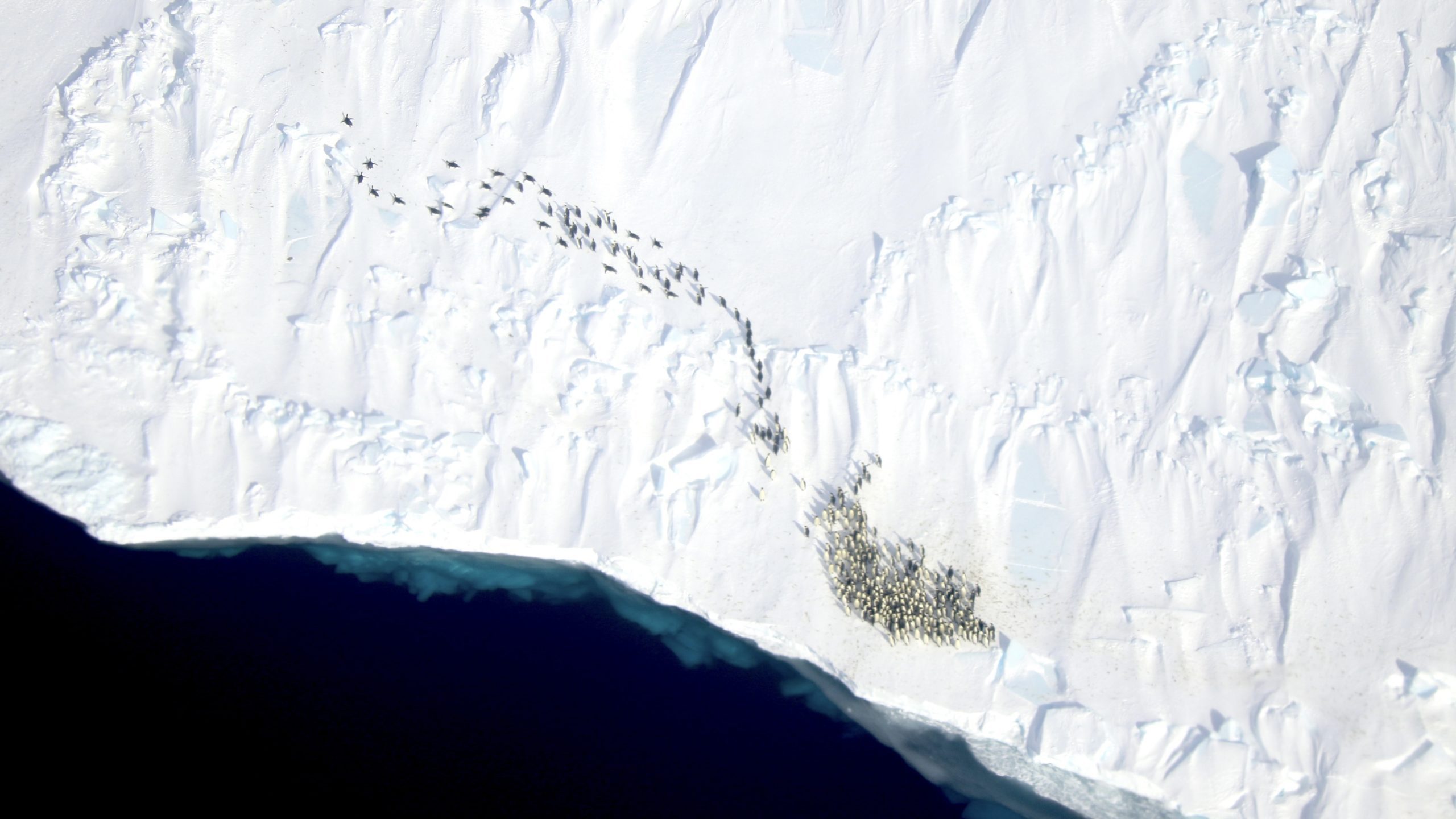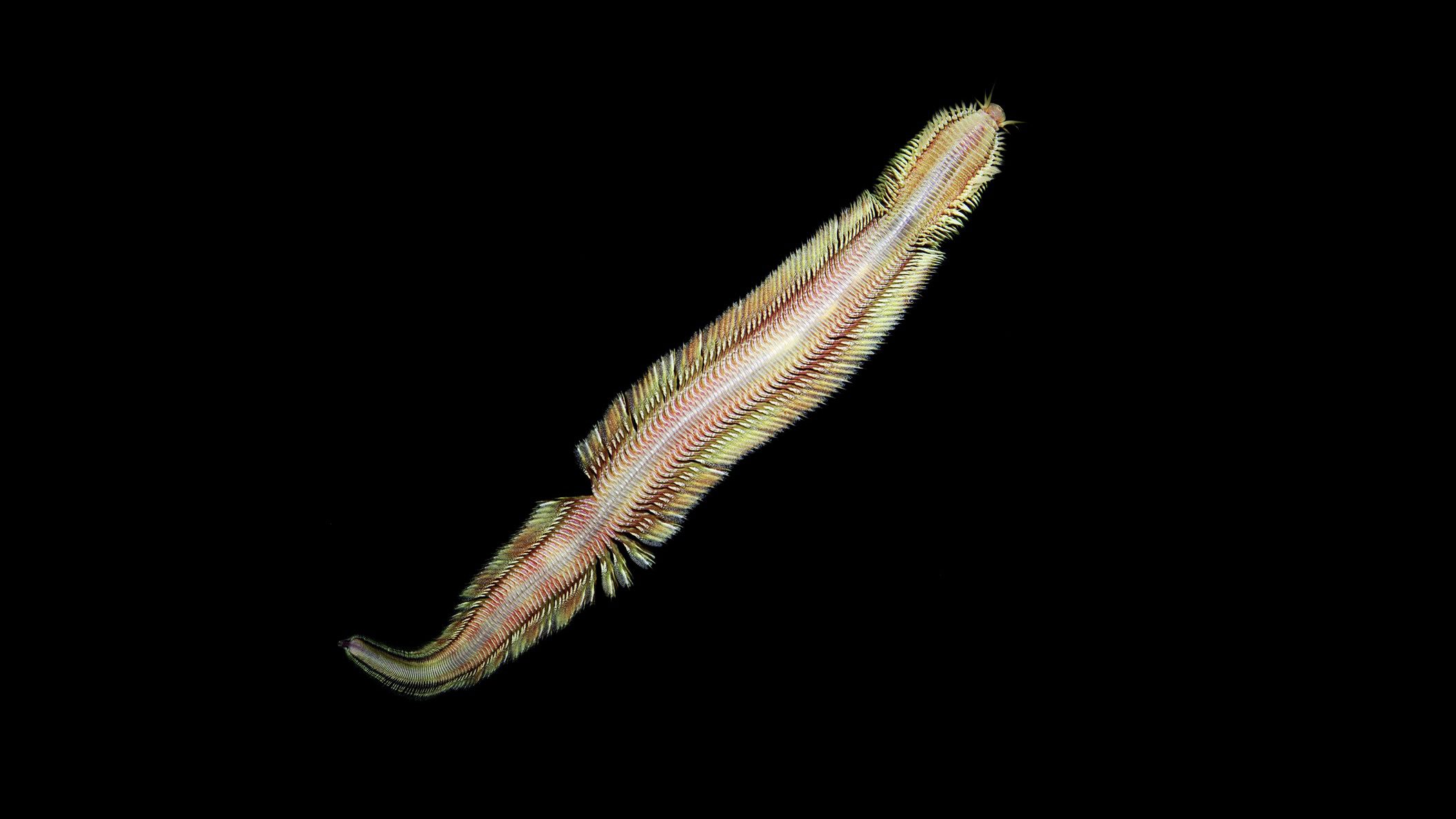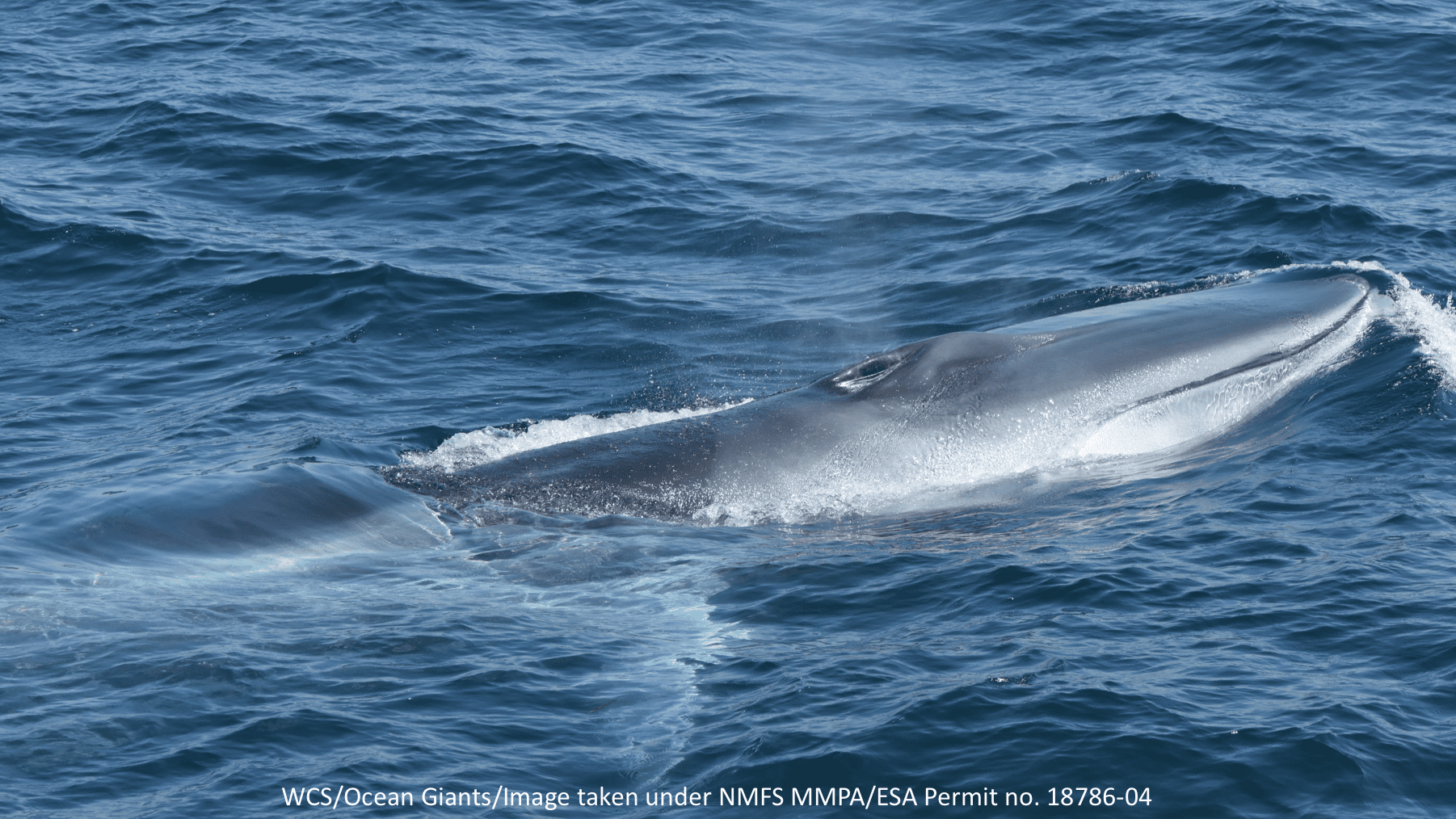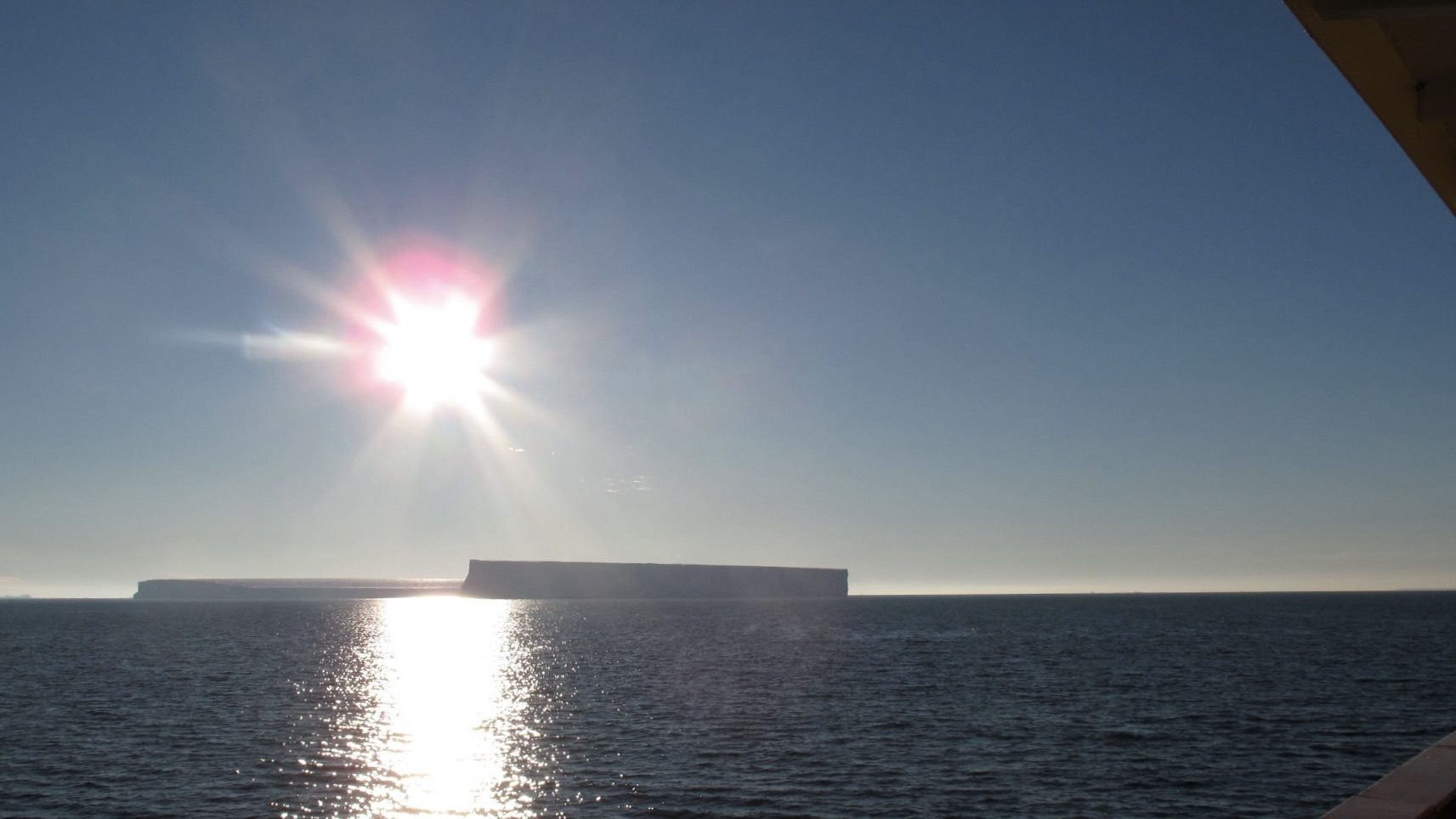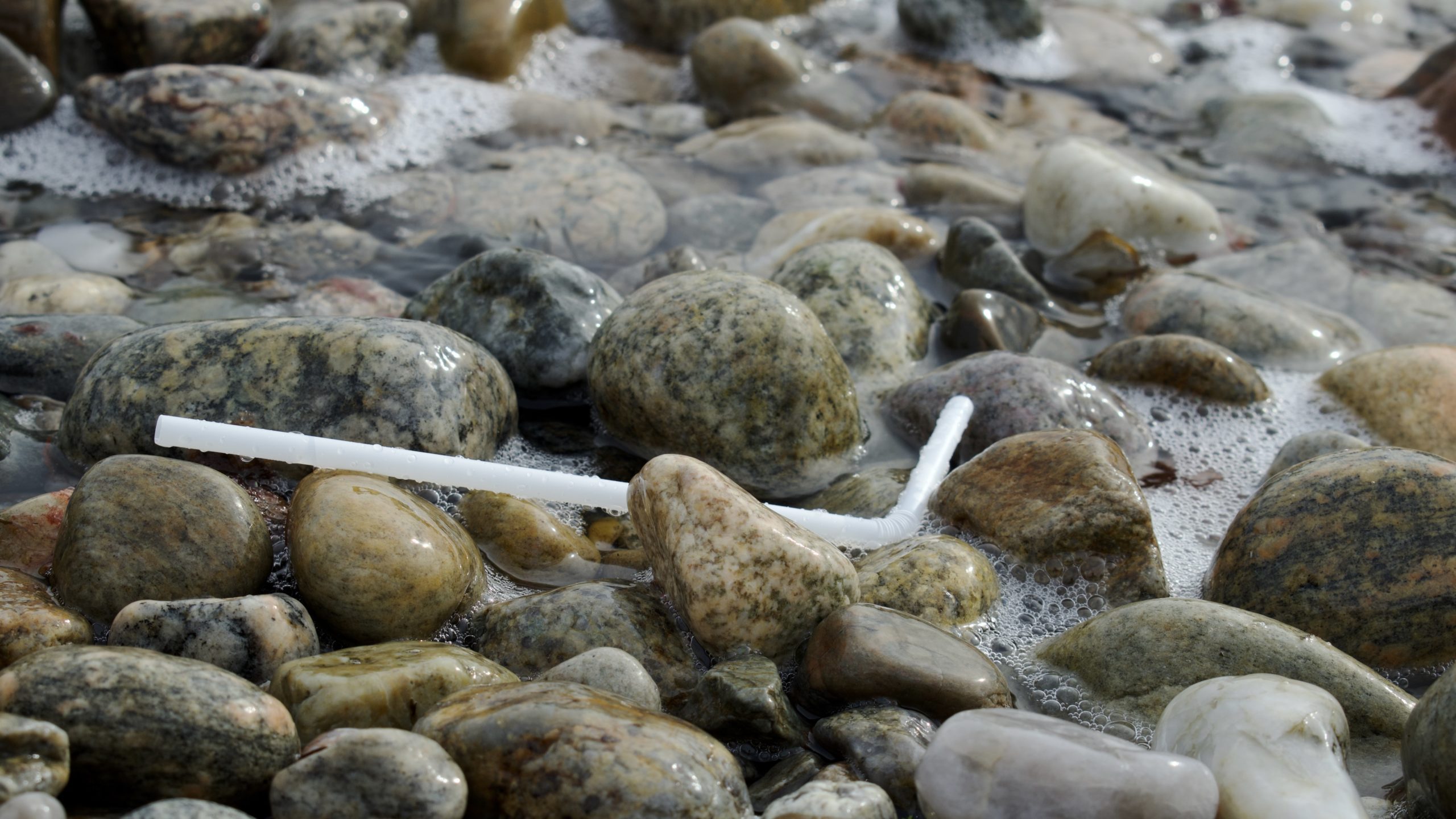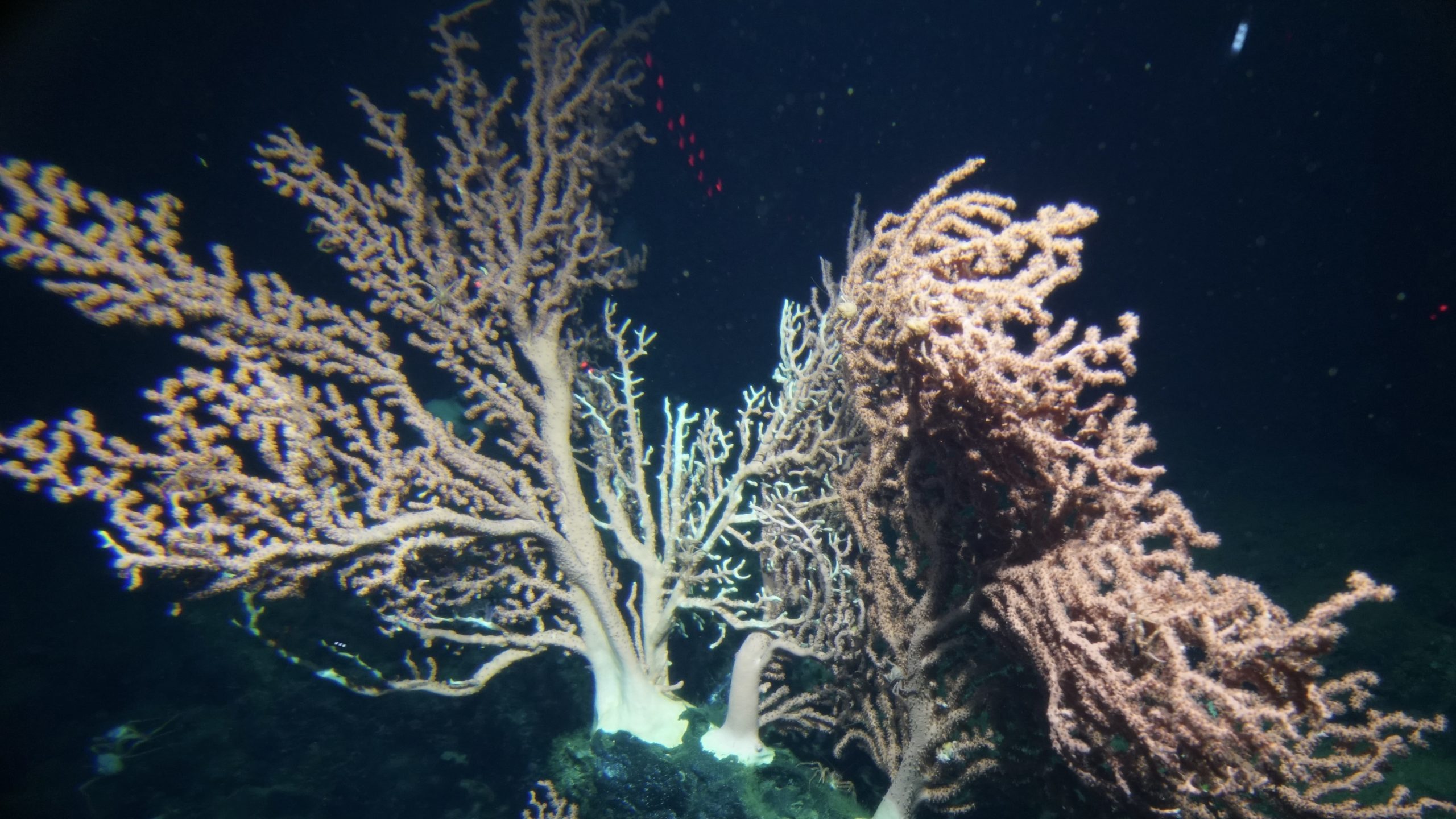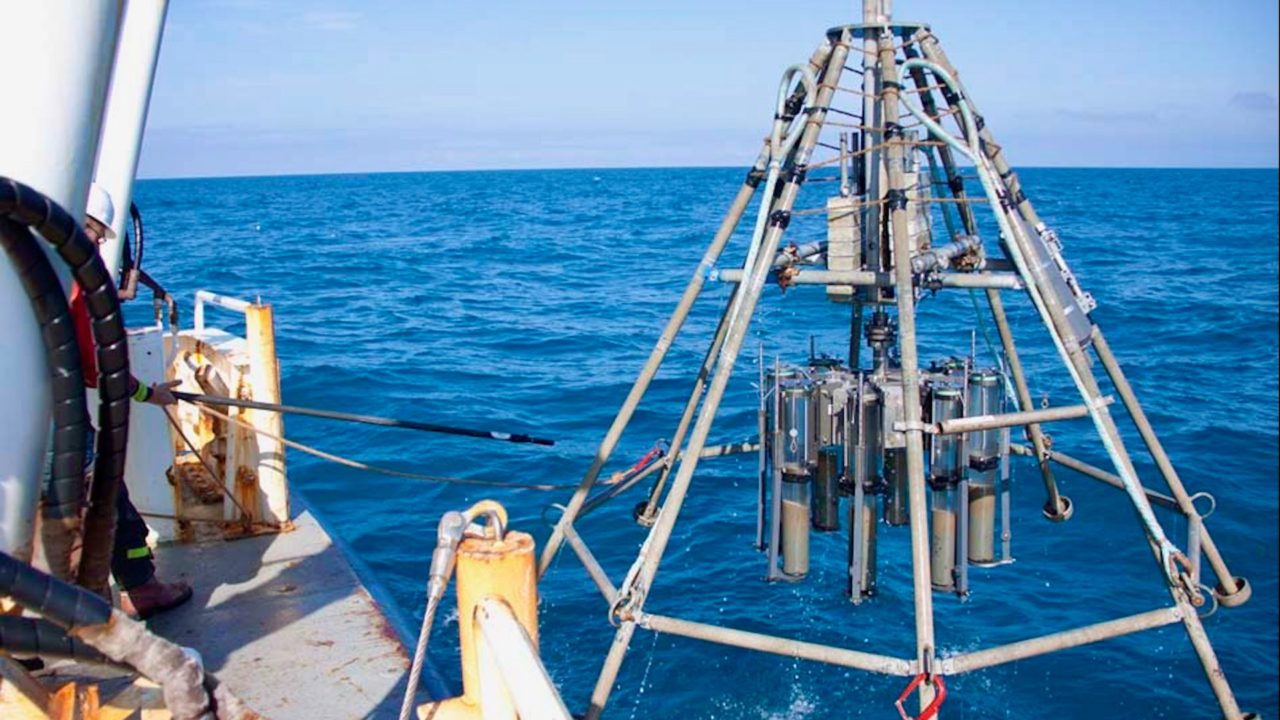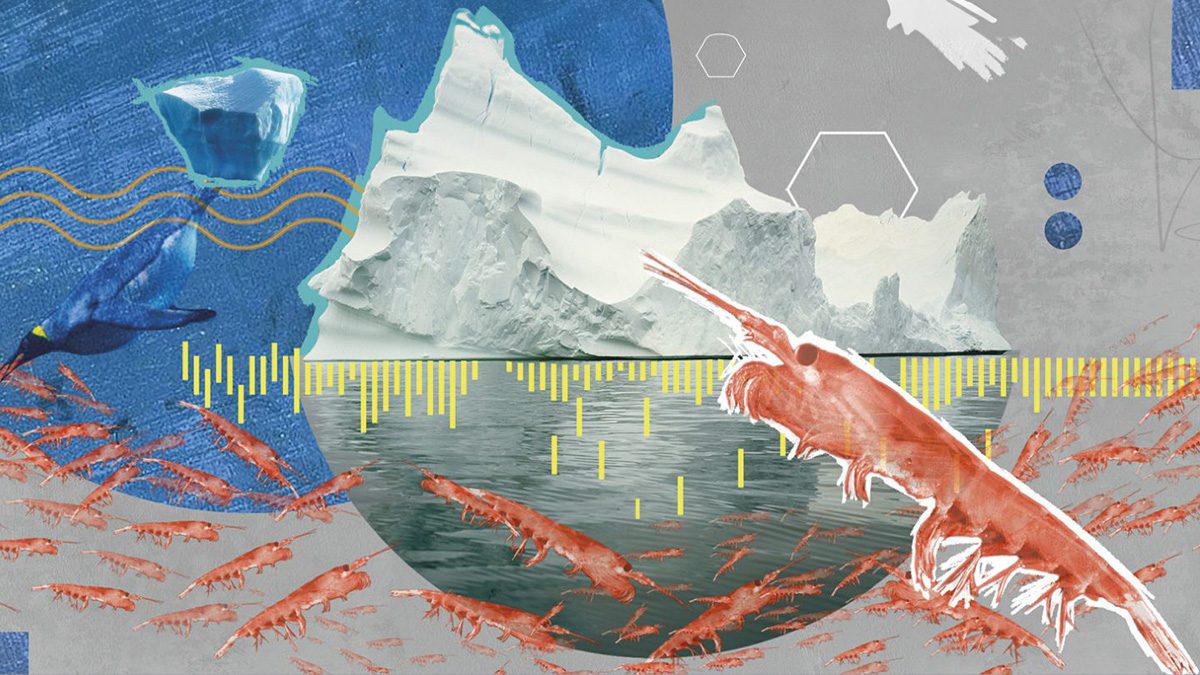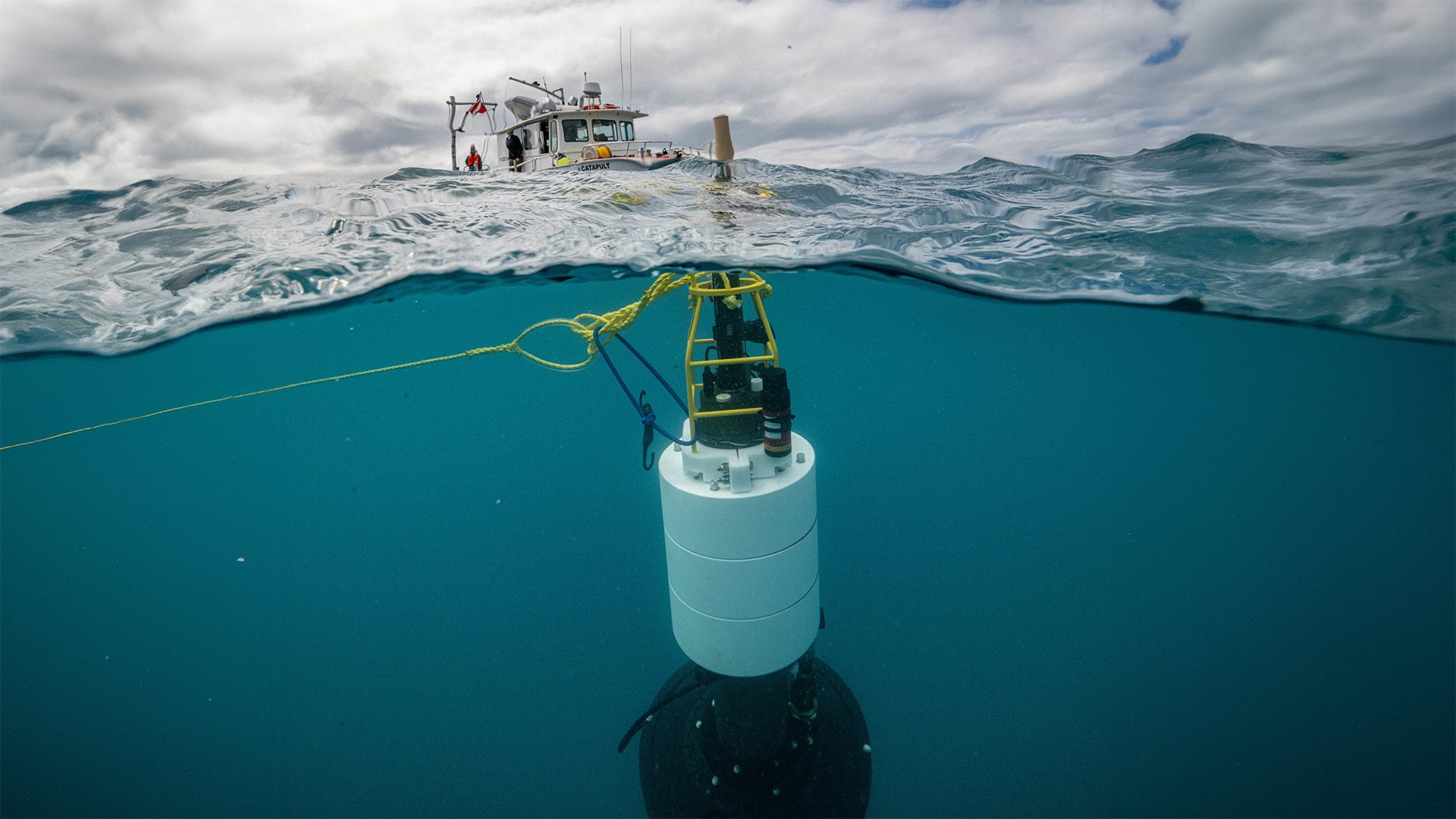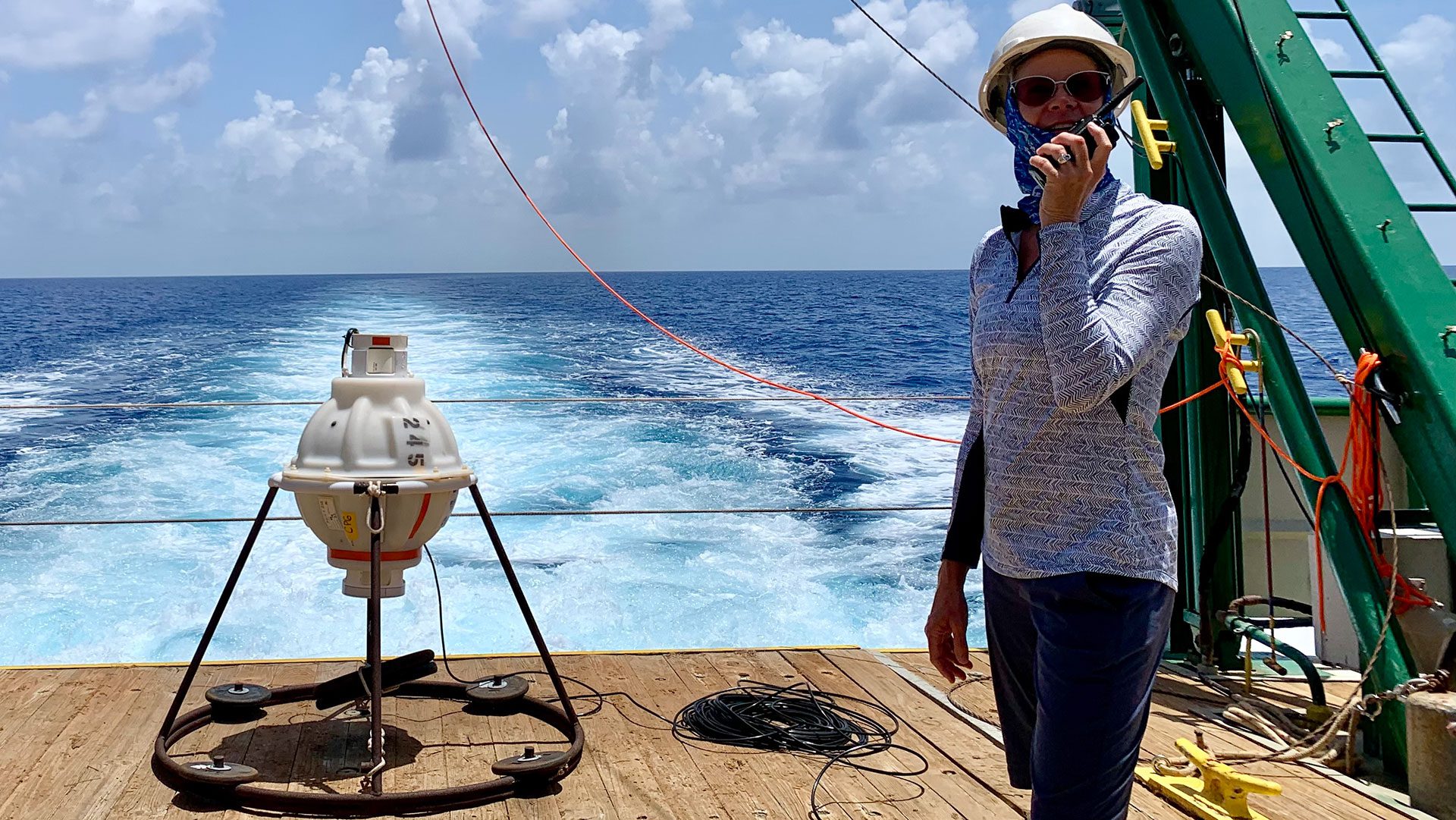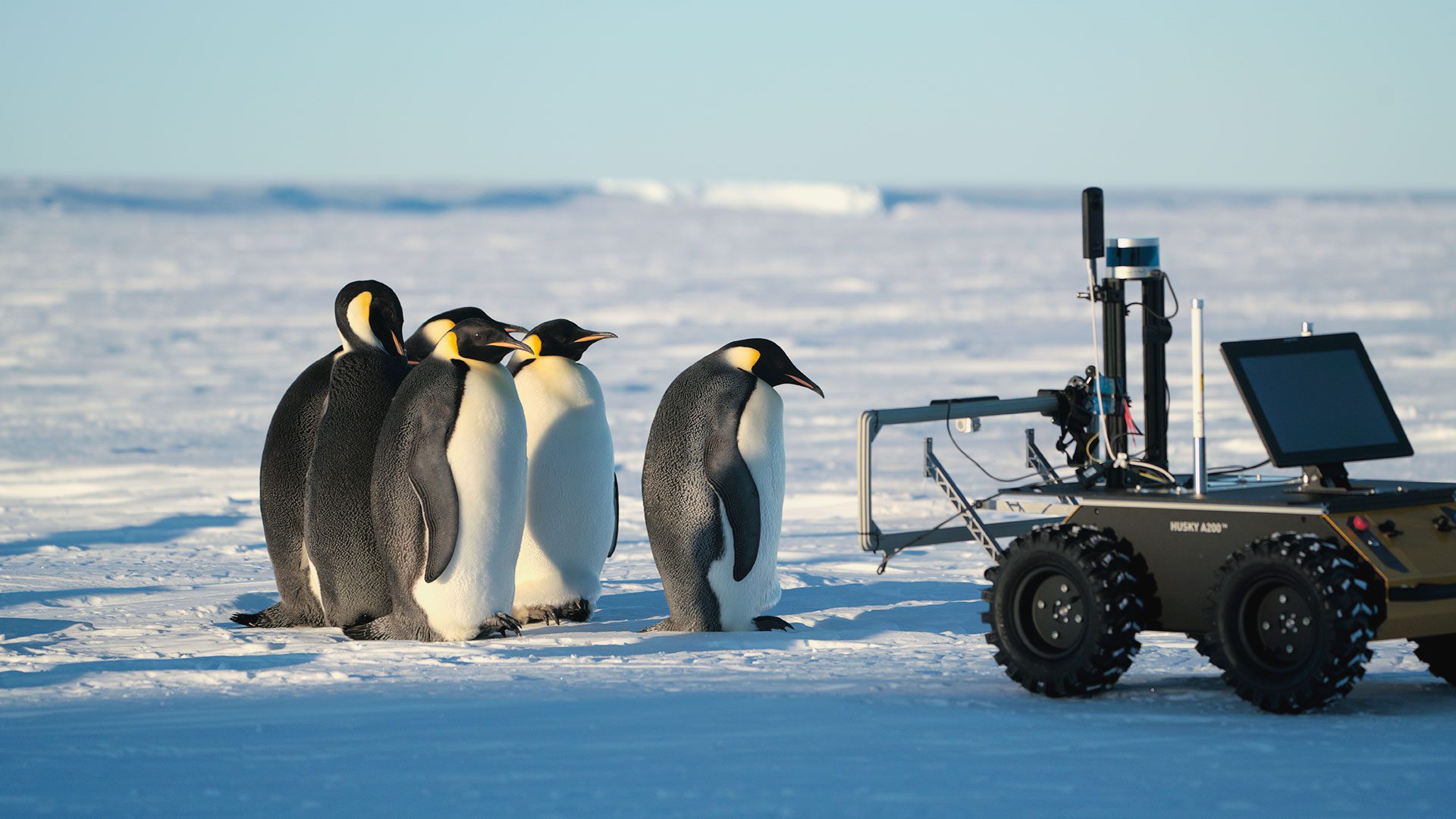Research Highlight
A new way to discover life in the ocean’s hadal zone
WHOI biologist Johanna Weston develops a novel tool to catch and study life in the ocean’s most extreme depths
Read MoreSonic Youth: Healthy Reef Sounds Increase Coral Settlement
Researchers at WHOI demonstrated that replaying healthy reef sounds could potentially be used to encourage coral larvae to recolonize damaged or degraded reefs.
Read MoreHigh Resolution Imagery Advances the Ability to Monitor Decadal Changes in Emperor Penguin Populations
High resolution satellite imagery and field-based validation surveys have provided the first multi-year time series documenting emperor penguin populations.
Read MoreNew Deep-Sea Worm Discovered at Methane Seep Off Costa Rica Named after Alvin Pilot Bruce Strickrott
The creature raises the number of new species found by scientists studying these seemingly inhospitable ecosystems to 48 Woods Hole, Mass. — Woods Hole Oceanographic Institution (WHOI), along with…
Read MoreNew Research Reveals: The New York Bight Is an Important Year-Round Habitat for Endangered Fin Whales
Researchers aim to use their science to help inform best practices and strategies to better protect fin whales in waters off NY and NJ Woods Hole, Mass. – The New…
Read MoreResearchers Studying Ocean Transform Faults, Describe a Previously Unknown Part of the Geological Carbon Cycle
Woods Hole, Mass. – Studying a rock is like reading a book. The rock has a story to tell, says Frieder Klein, an associate scientist in the Marine Chemistry &…
Read MoreVitamin B12 adaptability in Antarctic algae has implications for climate change
Woods Hole, Mass. — Vitamin B12 deficiency in people can cause a slew of health problems and even become fatal. Until now, the same deficiencies were thought to impact certain…
Read MoreSome Plastic Straws Degrade Quicker Than Others, New Study Shows
WHOI researchers determine lifetimes of drinking straws in the coastal ocean and develop a prototype bioplastic straw that degrades even faster than paper
Read MoreStudy says ice age could help predict oceans’ response to global warming
Woods Hole, MA – A team of scientists led by a Tulane University oceanographer and the Woods Hole Oceanographic Institution (WHOI) has found that deposits deep under the ocean floor…
Read MoreA new way of looking at plastics
WHOI researchers develop a new sustainability metric for plastic products
Read MoreA cold case, filed
A year after East Antarctica’s Conger ice shelf collapsed, an expert uses forensic evidence to uncover what happened
Read MoreNew Study: Deep Sea Sensor Reveals That Corals Produce Reactive Oxygen Species
A new sensor on the submersible Alvin discovered reactive oxygen species for the first time in deep-sea corals, broadening our understanding of fundamental coral physiology Woods Hole, MA — Just…
Read MoreEvidence of Climate Change in the North Atlantic can be Seen in the Deep Ocean, Study Finds
Woods Hole, Mass. –Evidence of climate change in the North Atlantic during the last 1,000 years can be seen in the deep ocean, according to a newly published paper led…
Read MoreWind Water and Ice
Like fiction, but real. Explore the “superpowers” of three Antarctic icons
Read MoreNowhere to go
As sea ice dwindles, Antarctic krill face an uncertain future
Read MoreFilming in the Arctic Night
A behind-the-scenes look at the making of the Emmy-nominated PBS film, Life in The Dark: The Polar Night
Read MoreStudy offers first definitive proof that Gulf Stream has weakened
“New research from the Woods Hole Oceanographic Institution offers the first conclusive evidence that the Gulf Stream has weakened. The powerful ocean current off the East Coast influences regional weather, climate and fisheries, and the finding could have significant implications both for New England and the global climate.”
Read MoreA new way to track marine snow ‘blizzards’
New submersible provides insights into how organic carbon moves through the ocean twilight zone
Read MoreNew Study Definitively Confirms Gulf Stream Weakening
The Gulf Stream – which is a major ocean current off the U.S. East Coast and a part of the North Atlantic Ocean circulation – plays an important role in weather and climate, and a weakening could have significant implications.
Read MoreUp close and personal
Ocean robots work alongside marine animals to study their behavior
Read MoreHow did the ocean remain so quiet during Tonga’s eruption?
Underwater acoustics expert Gil Averbuch teases apart a mystery
Read MoreTechnology Hatchery
The latest robotics projects happening inside the George and Wendy David Center for Ocean Innovation
Read MoreA throwback to ABE
The OG autonomous seafloor robot
Read MoreKeeping an ear out for whales
Scientists look to safeguard the mammals with robotic buoys in the New York Bight
Read More
